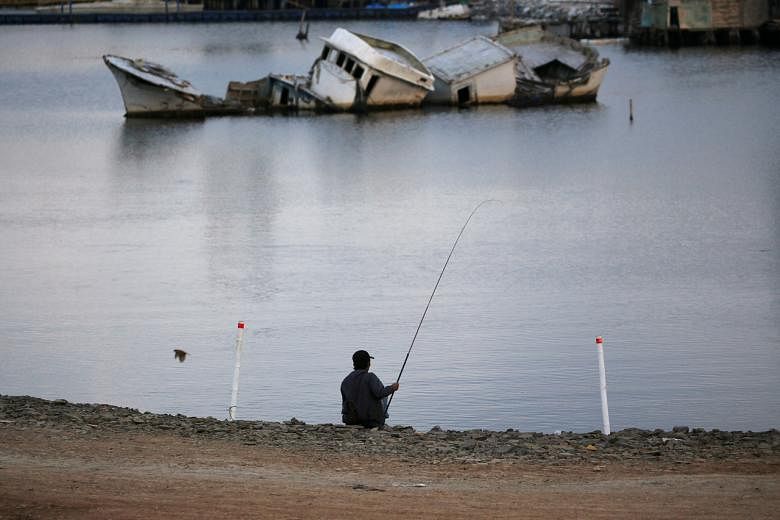KUALA LUMPUR (REUTERS) - Major Asian cities, including Tokyo, Jakarta, Ho Chi Minh City and Shanghai, are most at risk from rising sea levels, researchers warned on Thursday (Feb 27), urging authorities to invest more in flood defences and plan to relocate assets and people.
A study by UK-based risk consultancy Verisk Maplecroft analysed 500 cities worldwide with more than one million residents and identified places likely to experience sea level rise of 67 cm-2 metres by 2100, in line with scientific estimates if global warming increases at its current pace.
It found that 11 of the 15 highest risk cities are in Asia, with Dubai, Alexandria and New York also featuring.
"As a species we tend to like to live by coasts - with all the resources and transport it provides," said Mr Rory Clisby, a climate change analyst at Verisk Maplecroft in Singapore.
In Asia, cities with high population densities "tend to develop land that other parts of the world might leave", he told the Thomson Reuters Foundation.
Many of Asia's rapidly expanding cities are coastal and low-lying, making them vulnerable to rising sea levels and extreme weather such as flooding and cyclones.
This week, torrential rains flooded Jakarta for the second time in 2020, while Bangkok last month trucked in drinking water after the encroaching ocean increased salinity.
To lower flood risks, countries should combine "hard and soft engineering options", such as building sea walls and tidal barriers and restoring mangroves, said Mr Clisby.
Sea defences would need to be reinforced every decade or so, he added, noting "it's not a one-off expense".
Building in flood-prone areas and "ill-conceived" land reclamation projects should be stopped, he said, adding that some cities should consider moving key assets to safer places.
"Sponge city" schemes in China which incorporate sustainable drainage systems into infrastructure - like water-absorbing asphalt and green spaces to prevent water from pooling - could also work across the region, he added.
The highest-risk cities globally are Guangzhou and Dongguan in China's Pearl River Delta Economic Zone, which generates 20 per cent of the country's GDP and 3.8 per cent of global wealth, the report said.
"It is a massive global manufacturing hub," said Mr Clisby, adding that both cities should look at relocating key assets and investing in large-scale engineering projects.
Across China, US$348 billion (S$486.39 billion) of GDP and nearly eight million people are located in areas at high and extreme risk of sea level rise, the report noted.
While China and Japan have the resources to put in place measures to mitigate flood risks, Mr Clisby said, Vietnam, India and Indonesia have more limited resources and institutional capacity to meet the challenges posed by rising seas.
Indonesia is already planning to move its capital to the island of Borneo, as Jakarta - on the north coast of Java island - is slowly sinking and suffers regular flooding.
"They are starting to think about a decade time-scale to readjust their risk exposure, and things like that will be more common in the next decade," said Mr Clisby.

